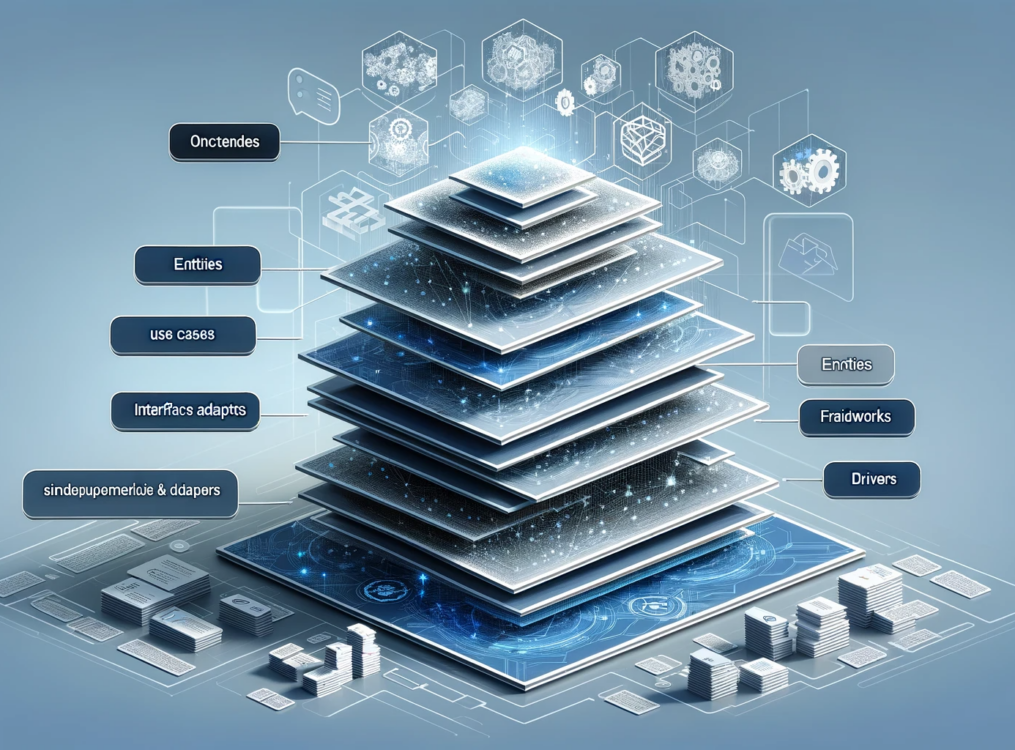Welcome to the world of software development! As you embark on this journey, understanding and mastering Clean Architecture is key to building robust, scalable, and maintainable software. This guide is tailored to help you, as a beginner, grasp the essential concepts and practices.
What is Clean Architecture?
Clean Architecture, introduced by Robert C. Martin (Uncle Bob), is more than just a design pattern; it’s a philosophy for software development. Its primary goal is to create systems that are independent of frameworks, UI, database, and any external agency. The result is a system that’s easy to test, maintain, and adapt to changing requirements.
Core Principles of Clean Architecture
- Independent of Frameworks: The architecture does not depend on the existence of some library or framework. This allows you to use such frameworks as tools, rather than having to fit your system into their limited constraints.
- Testable: The business rules can be tested without the UI, database, web server, or any other external element.
- Independent of UI: The UI can change easily, without changing the rest of the system.
- Independent of Database: You can swap out Oracle or SQL Server, for Mongo, BigTable, CouchDB, or something else. Your business rules are not bound to the database.
- Independent of any external agency: In other words, your business rules simply don’t know anything at all about the outside world.
Importance of Clean Architecture
Enhanced Maintainability
With clearly defined boundaries and responsibilities, each part of the system can be maintained in isolation, reducing the complexity involved in code modifications.
Improved Testability
A key benefit is the ease of testing. Since each layer can be tested independently, it ensures a more robust and reliable system.
Greater Flexibility and Scalability
Adapting to new technologies or scaling your application becomes simpler, as changes in one layer don’t necessitate a complete overhaul of the system.
Learning Path to Master Clean Architecture
Grasp the SOLID Principles
These five principles form the foundation of Clean Architecture. Understanding them is essential for creating systems that are both flexible and maintainable.
- Single Responsibility Principle: A class should have only one reason to change.
- Open/Closed Principle: Software entities should be open for extension, but closed for modification.
- Liskov Substitution Principle: Objects of a superclass shall be replaceable with objects of its subclasses without breaking the application.
- Interface Segregation Principle: No client should be forced to depend on methods it does not use.
- Dependency Inversion Principle: Depend on abstractions, not on concretions.
Delve Into Design Patterns
Design patterns are typical solutions to common problems in software design. Each pattern is like a blueprint you can customize to solve a particular design problem in your code.
Practice Regularly
The best way to master Clean Architecture is through practice. Start with small projects and gradually increase the complexity. Regularly refactor your code to align with Clean Architecture principles.
Embrace Continuous Learning
The tech world is constantly evolving. Keep yourself updated with the latest trends, read books, attend workshops, and engage with the developer community.
Conclusion
As you start your journey in software development, embracing Clean Architecture will be a game changer. It will not only make your applications more robust and flexible but also enhance your problem-solving skills. Remember, mastering Clean Architecture is a journey, not a destination. Keep learning, keep coding, and watch as you transform into a proficient and skilled software developer.


Leave a Reply
You must be logged in to post a comment.